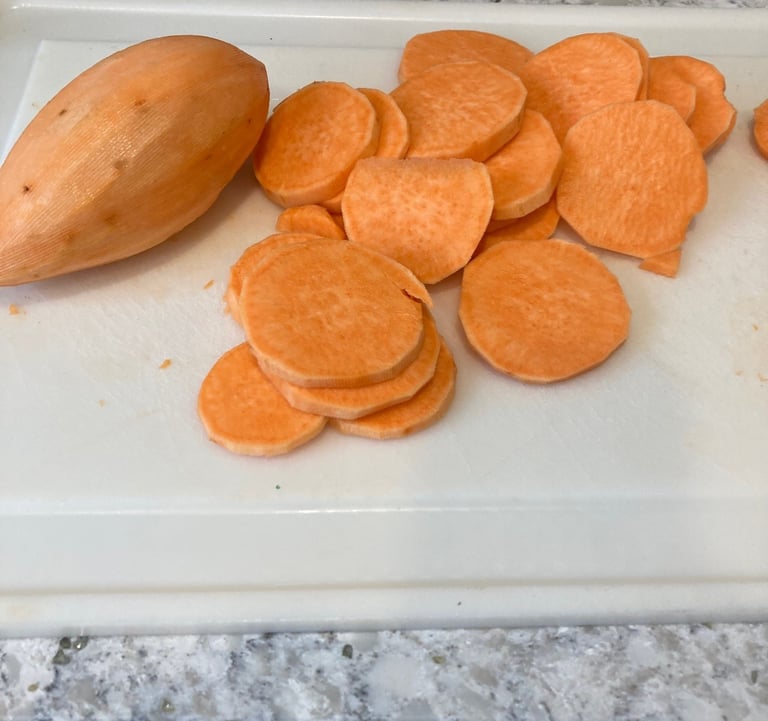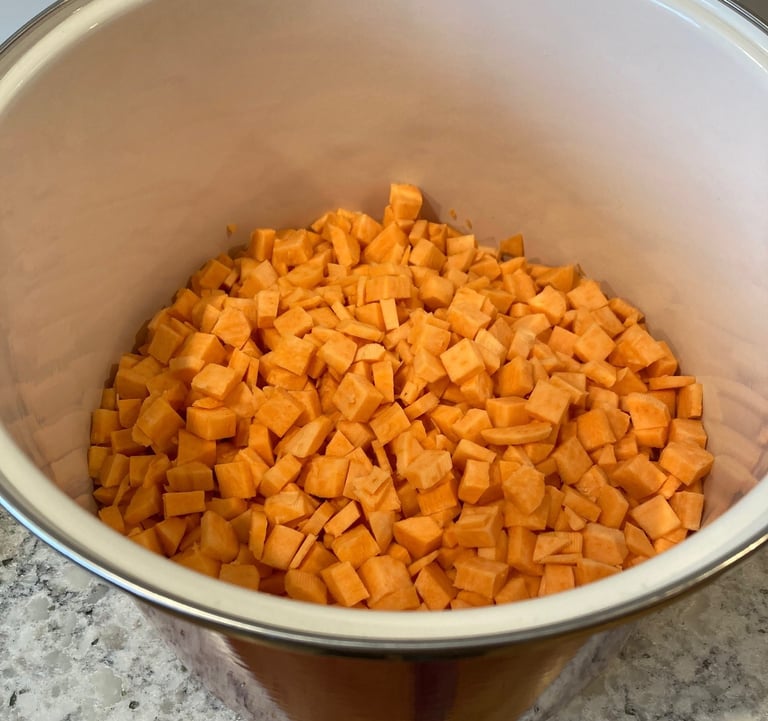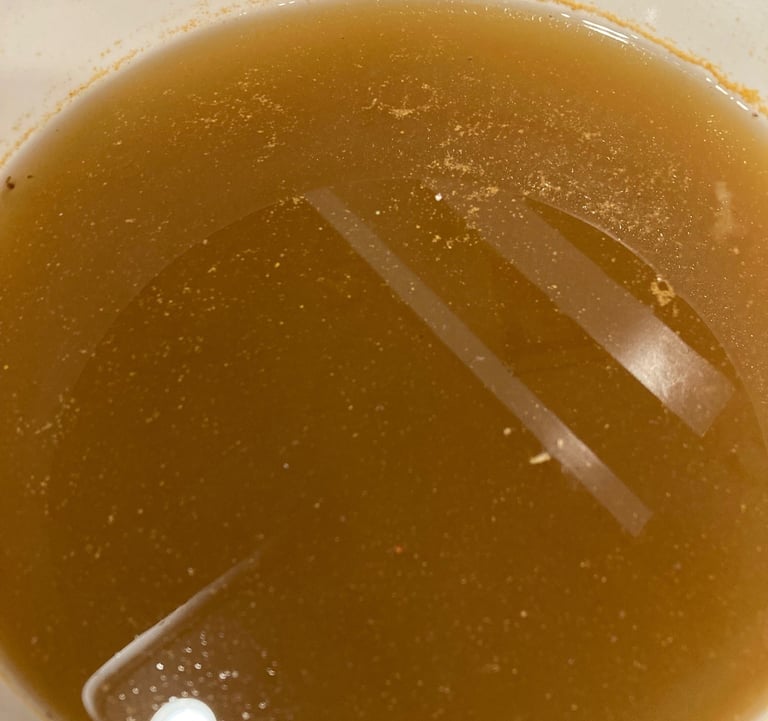Sweet Potato Snow Day
Well, we got the snow that was predicted, along with a quantity of sleet, and power went out early this morning, so today had all the makings of a lazy, sit-by-the-fire kind of day. But around noon while I was sitting by said fire playing scrabble on my cell phone, the power came back on, and it just seemed a really good time to finally make good on the sweet potato wine promise. You may recall from an earlier blog post that I had a quantity of home-grown sweet potatoes that I had cured in the oven for a bit. We had baked some for dinner a few nights ago and they were excellent, which I'm sure helped inspire me to get moving on this wine. For a little historical context, a lot of country wines became popular during the Civil War Reconstruction years, with much of the pre-war farmland having been scorched and the crops destroyed, southerners were left to making wine with whatever fruits or vegetables were still available at the time. Since cotton was still king, and as the economically decimated southern states needed to recover financially, cotton fields proliferated. Cotton makes fairly poor wine as it turn out, so enterprising southerners began making wine with other crops and the sweet potato was a vegetable that was commonly used.
The variety of sweet potatoes I grew this season was Georgia Jet, a "superb baker with sweet and meaty, deep orange flesh and a rich, sugary aroma that fills your kitchen whenever these orange-gold tubers are tucked into the oven", or even boiled in a pot as it were. If you want the detailed recipe, check out the recipe section of the website, but basically this batch consists of 6 pounds of sweet potatoes, washed, peeled, and diced, covered with a gallon of water, then simmered on the stovetop for 30 minutes. A very nice side benefit of sweet potato wine is that only the "juice" from the simmering is used in the winemaking process, so you end up with 6ish pounds of tender cooked sweet potatoes that can be baked in a casserole, made into a pie, or even cooked into a nice vegetarian chili (I know, but it tastes much better than it sounds!) Sweet potatoes, the name notwithstanding, don't have enough fermentable sugar to make wine, so I added both brown sugar and granulated sugar to bring the specific gravity up to a point that will yield about a 12% ABV (alcohol by volume) wine. I also added a pound of chopped golden raisins to add body to the wine. I have to admit it smelled much better than it looked, the appearance being somewhat akin to dirty dishwater and bearing little resemblance to the original color of the fruit as you can see from the pictures below. I am sure it will clear to what I expect to be more of a golden color, but we'll just have to wait and see. I used a Lalvin K1-V1116 wine yeast that is a solid white wine and fruit wine yeast and also ferments well in tougher conditions, which I thought appropriate since it's colder than normal out and I don't know how well sweet potatoes ferment compared to other fruits and veggies. I'll leave it for a week or so in primary fermentation, stirring the must daily, and transfer to secondary as usual once the SG reaches around 1.00.
I really don't have much of an idea what this wine will taste like in the end, so it will be a bit of a surprise. A pound of raisins is a lot for a gallon of wine so I suspect it will have at least a touch of raisin flavor but that's just a guess, one of the great things about winemaking is that every batch is different and even batches made from the same ingredients can taste different due to all sorts of things like yeast date, fermentation temperature, variation in the crop climate and growing conditions of whatever you're making wine with, etc. Regardless, if it was good enough for my southern ancestors, I'll give it a whirl. And I got some great sweet potato chili out of the effort!





